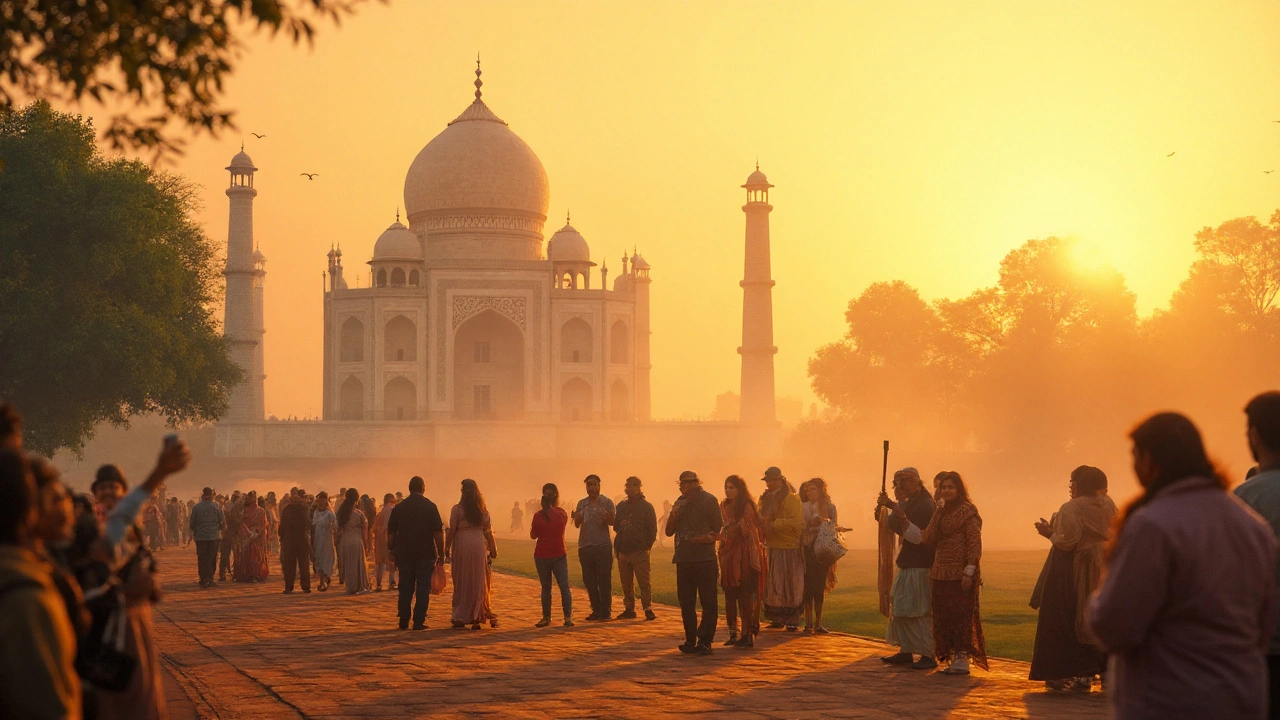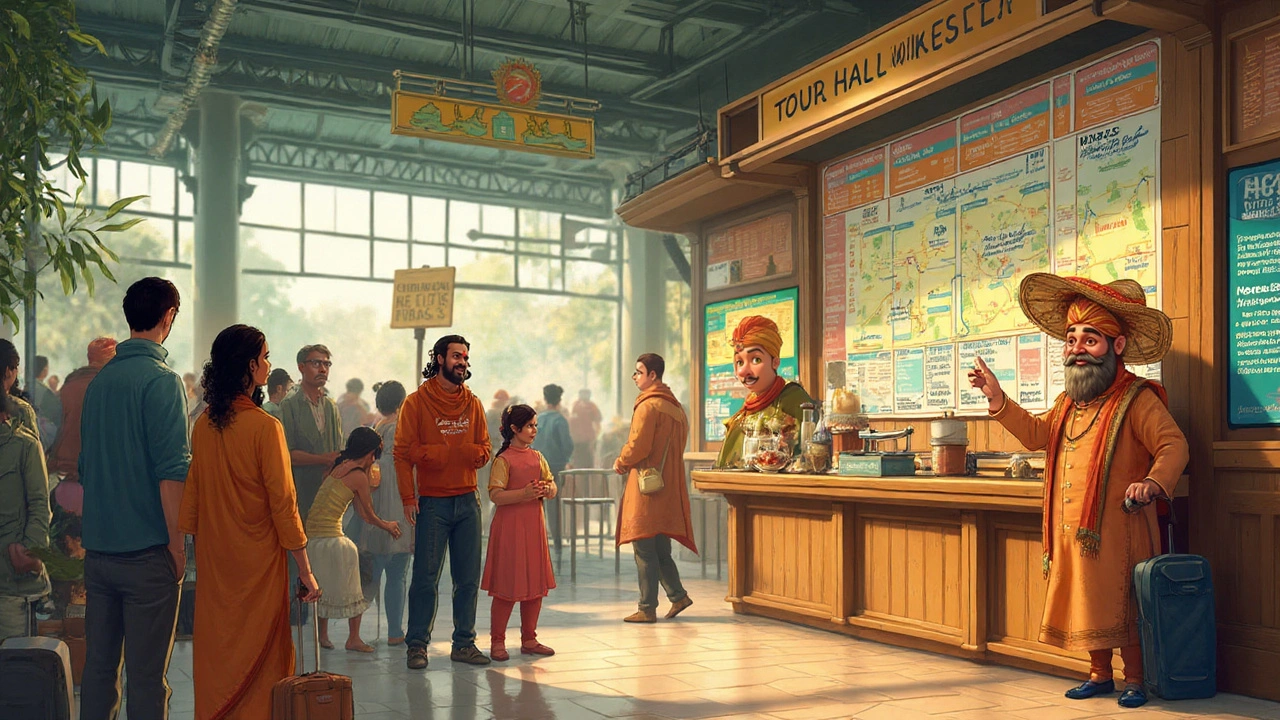Most Visited Historical Site in the World: Stats, Facts & Travel Tips
 Aug, 5 2025
Aug, 5 2025
The real title for the heavyweight champion of historical sites is always up for debate. But here's the twist—it's not Stonehenge, not even ancient Machu Picchu. The most visited historical site in the world, clocking in with jaw-dropping visitor numbers year after year, is the Great Wall of China. Tourists from every corner of the globe head to its stone ramparts, running like a dragon's spine across mountains and deserts, all looking for that bucket-list shot or just a chance to touch a chunk of world history. Why do so many people flock there, and how can you avoid the crowds when you finally go?
Why the Great Wall of China Draws the Biggest Crowds
What is it about the Great Wall of China that keeps topping the charts? For starters, it's big—like, really big. We're talking more than 21,000 kilometers (that's over 13,000 miles for my fellow Canadians and Americans who still think in miles). It snakes across 15 different provinces. Built over centuries, parts of it date back more than 2,000 years. Every stretch of the Wall comes with stories—massive battles, emperors, legends, even ghost tales. It’s a living piece of history that you can actually walk on, and that hands-on feeling draws people in.
If you love stats, chew on this: In some years, the Wall has drawn in over 10 million visitors. Just the Badaling section—an area renovated to handle regular tourists—welcomes between 7 and 8 million visitors a year. Beijing's sections tend to get the most foot traffic, especially when Chinese holidays kick in. That’s like the whole population of Switzerland marching across some ancient stones in a single year. It's wild when you think about it.
| Year | Total Worldwide Visitors (All Sections) | Badaling Section Visitors |
|---|---|---|
| 2017 | 10.0 million | 7.5 million |
| 2019 | 10.7 million | 8.1 million |
| 2023 | 9.5 million | 7.2 million |
The Wall isn’t just for tourists with cameras—lots of locals come too, using the Wall as a personal gym (seriously, you'll spot folks hiking up the steepest parts before work), or for family outings. It’s woven into Chinese culture, showing up in music, movies, and even as a background for epic wedding photos. There’s this sense you’re standing on something that’s been through crazy amounts of history, and whoever you are, that feels huge.
What Makes a Historical Site "Most Visited" Anyway?
Not every list you find online agrees on the top dog, but when you break down the numbers, the Great Wall usually wins out over rivals like the Eiffel Tower, Rome’s Colosseum, or the Pyramids of Giza. The trick is, how do you count "historical" versus "tourist" sites? For example, the Forbidden City and the Louvre museum sometimes rank close, as both can draw close to 10 million people a year, but not everyone classifies them the same way. Still, when you consider a manmade landmark that covers multiple regions, open to massive crowds, and that's deeply historic, the Wall just edges out the competition.
For context, let’s stack up a few other big names for comparison. The Eiffel Tower gets around 6–7 million annual visitors, the Colosseum in Rome about 7 million, and the Louvre just under 9 million by most recent counts. The Pyramids of Giza see lower numbers, with estimates between 4 and 5 million per year. Religious sites, like the Vatican, report high foot traffic as well, but they're a bit trickier to separate by "historical landmark" alone. Check out this head-to-head:
| Site | Country | Annual Visitors (Average) |
|---|---|---|
| Great Wall of China | China | 10–11 million |
| Louvre Museum | France | 8–10 million |
| Colosseum | Italy | 7 million |
| Eiffel Tower | France | 6–7 million |
| Pyramids of Giza | Egypt | 4–5 million |
Another thing to consider: sections of the Wall are free, while others charge admission. Some people pass through for a quick photo, and others hike for miles. Counting everyone can get fuzzy, but the numbers are huge no matter how you slice them. If you’re after verified head counts, Badaling has turnstiles and ticket systems, which is why those numbers are more solid than the wilder, less regulated parts.

Getting the Most Out of Your Visit: Insider Tips
If you’ve ever seen a photo of the Wall packed like Main Street on Canada Day, you probably thought, “Nope, too crowded.” And yeah, it can get nuts, but there are ways to dodge the crowds, have your "wow" moment, and even snag that Instagram shot without thirty strangers in frame. First, avoid Chinese public holidays at all costs—Golden Week in October and Chinese New Year are like a magnet for monstrous crowds. If you go mid-week, early in the morning, or late afternoon, you’ll stand a real chance of some peace.
Most tourists head to Badaling because it’s the easiest to reach from Beijing and has cable cars, snack stalls, and that classic, Instagram-ready look. But consider going to less-visited stretches like Mutianyu, Jinshanling, or Simatai. These sections are wilder, have fewer people (sometimes shockingly empty), and the views are unbeatable. For a rugged, "Indiana Jones feeling," Jinshanling is full of unrestored towers, winding stairs, and epic sunrise spots. And if you want a real adventure, some companies even do camping or guided hikes where you can sleep under the stars on the Wall—just double-check if permits are still needed, as rules keep changing.
Staying fueled is important. Parts of the Wall get hot in summer (over 35°C sometimes), and winters bite hard, so pack water, layers, sunscreen, and decent shoes. Don’t trust local weather apps—they’re often wrong about mountain weather. Also, don’t underestimate the steps. Some rises are knee-height, so imagine squatting up a staircase for an hour.
If you’re a planner, buying tickets online for the major sections can save time. Pay attention to "last entry" times, too; guards won’t let you on if you show up late, even if you just took a two-hour bus ride. Cash helps in the smaller, rural sections—yes, even today, some stalls won’t take cards or overseas apps.
Finally, take the time to read the little signs and plaques. Sure, you may want the sweeping views, but the Wall is packed with stories—famous generals, battles against Mongol invasions, even the legend that you can see it from space (which isn’t true, but hey, it’s a fun myth to bust out at parties).
Things Most People Don’t Know About the Great Wall
The Great Wall isn’t just one wall. It’s actually a series of walls, trenches, and natural barriers, built and rebuilt over dynasties. Different emperors used different materials—stone, bricks, tamped earth, even sticky rice mortar (yup, the same sticky rice you find in dim sum; turns out it’s pretty solid). Some bits look like medieval fortresses, while others have faded into rolling hills, barely visible but still there.
Only a fraction of the Wall is restored and open to tourists. The wild parts are often crumbling or covered in brush. In some remote areas, local families have worked together to restore pieces themselves, turning their village’s stretch into a unique spot with a personal backstory. On a hike, you might cross someone harvesting herbs, or find a calligraphy poem etched on a stone by a poet hundreds of years ago—little moments that really hit you with the "wow, this is living history" feeling.
Here’s another weird bit: in the past, lots of stones from the Wall were nicked for house-building or paving streets in nearby towns. Local governments now police against this, but you’ll spot older village homes dotted with Wall bricks if you know where to look. Restoration work is tough, and experts estimate about one third of the Wall has disappeared. Only about 10% is well preserved and open for visitors.
The Wall also holds a place in pop culture. Aside from Chinese films and TV, it’s been a backdrop in Hollywood blockbusters, video games, and even appeared on world currency. Some marathons take place on the Wall, which is next-level brutal for runners (those stairs are no joke). During major anniversaries, events and light shows happen up and down different sections, drawing even bigger crowds and drone displays you have to see to believe.
Here’s a pro tip you won’t find on travel posters: if you want the Wall almost to yourself, spring or late autumn are the times to go. Misty mornings in April or October can be especially atmospheric—think ancient warriors and legends coming to life. Just bundle up, because the temperature swings are savage. And don’t be surprised if you wind up in a selfie or two with local tourists; for many, meeting foreigners on the Wall is as special as the view itself.
No matter how you visit, standing on the most visited historical site in the world gives you bragging rights and a sense of connection to a truly global story. It’s one thing to see it in photos, but the real thing is bigger, more rugged, and somehow, more personal than you expect. Whether you like ancient mysteries, epic hikes, or breathtaking views, the Great Wall is the spot you’ll never forget—and neither will the millions of people marching along it with you, year after year.